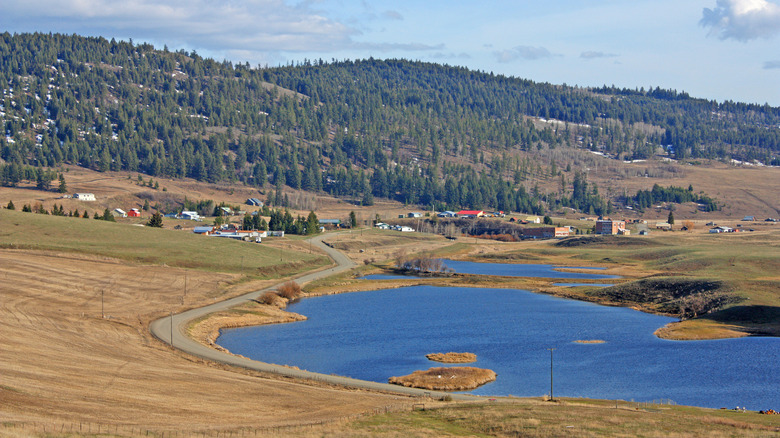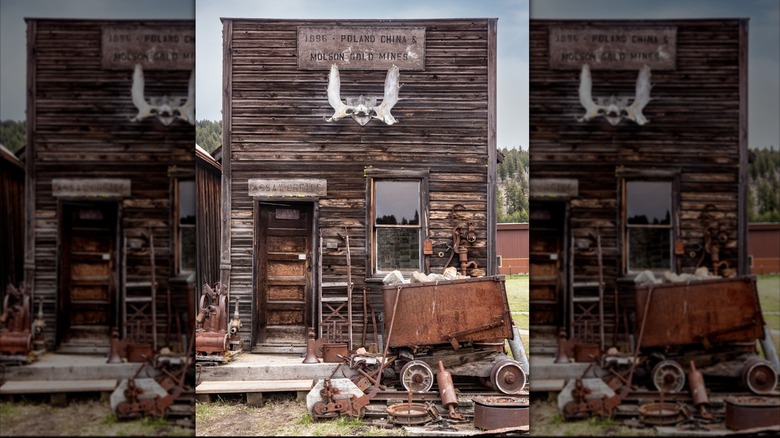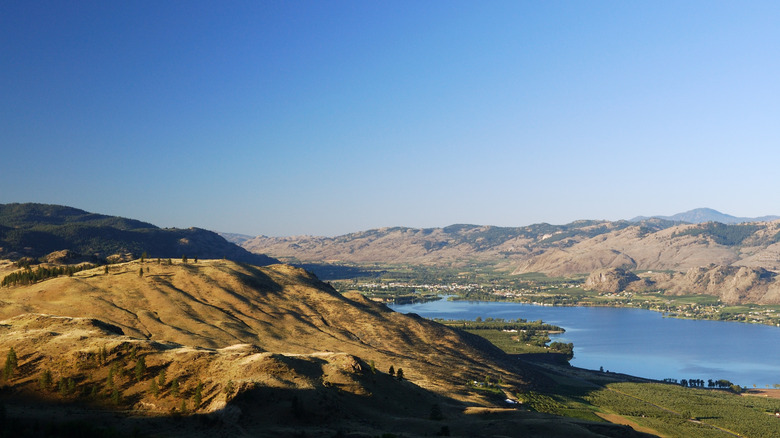Washington's Off-The-Radar Abandoned Mining Ghost Town Is A Free-To-Visit Gem Bursting With History
For better or for worse, mining and ghost towns often go hand in hand with stories of boom and bust. In 1900, a wealthy Canadian family saw an opportunity to finance a town less than 2 miles south of the British Columbia-Washington border during Washington's gold rush. John Molson, a well-known Canadian business magnate, reportedly invested $170,000 (worth over $6.5 million today) to construct the town of Molson, Washington. Three hundred people poured in, and the town boomed as a key border town. However, the good times ran as long as the mines. A year later, the mines began to dry up, and nearly everyone abandoned Molson. Ironically, everyone else did so a few years later, when residents physically relocated the town of "Old Molson" to "New Molson" across the railroad tracks, following the removal of everyone from the land by a local homesteader, J.H. McDonald. George B. Meacham, who established the town in 1898, never formally registered it.
Despite being off the radar today, a century ago, Molson was home to car and farming equipment dealerships before the town largely died off during the Great Depression. Since 1960, local efforts have developed Molson into one of the best-preserved ghost towns in the state. The town is a free-to-visit living time capsule full of history and culture, stretching from Okanogan County's brief mining heyday until most residents left. Molson is less than two miles from the border and approximately 20 minutes from Oroville, the nearest city. If you're flying in to explore "Okanogan Country," the nearest major airport is in Spokane, just over 3 hours away. The miles will fly by as you pass Washington's ancient riverbed canyon.
Molson Lives On
While other ghost towns have faded with time like this notorious Utah desert wonder, Molson is a can't-miss for history buffs or those curious about life on the frontier a century ago. No matter what season you visit, you'll drive right into an open-air museum that's largely accessible to all – unless it's covered in snow! (There is no snow removal.) As you stroll through Molson, you'll pass preserved offices, well-maintained, traditional farming equipment, historic cabins, and the town bank. Peer inside the windows, where you'll find trinkets, treasures, and photos reflecting life on the frontier decades ago. Outside of summer, don't forget your jacket on your walk; Molson is relatively high up, at 3,708 feet, and it may be cooler.
If at all possible, don't miss visiting during the summer months to tour the brick schoolhouse. Since 1982, the school has functioned as a museum, where visitors can tour a classroom, visit the library, and get a taste of school life generations ago. Visitors with mobility issues may have trouble entering other buildings due to stairs, but should note that the school does have disabled parking as well as mobility-friendly facilities. When you have questions, ask your local guide to fill in the gaps. Unique to Molson is the living aspect of the town; locals (former teachers or students) from the area volunteer and provide a unique one-of-a-kind experience down memory lane. If you enjoy your visit, make a donation as a token of your gratitude and don't forget to sign the guest book. You can also grab a few souvenirs in the gift shop.
History meets beauty around Molson
The quiet northern corner of Okanogan County is one of Washington's best-kept secrets for hikers and history enthusiasts. In just a few miles, the landscape dramatically changes from highlands to high desert, where fruit orchards and wineries have taken root around Oroville, the halfway point along the Pacific Northwest Scenic Trail, running from Washington to Montana. Even if you're not keen to take on over 1,200 miles of Mother Nature, starting from stunning Glacier National Park to the Pacific Coast, the largely flat Similkameen Trail has a more bite-sized 2-mile option and a 4-mile trek overlooking a waterfall. Plus, there's a 9.7-mile trek along the beautiful Similkameen River, with its high desert backdrop, to the Enloe Dam. You may see signs of gold prospecting, as well as wildlife. Be prepared for scorching heat in this part of Washington in the summer as well as a potential bear encounter.
Before or after your hike, don't miss exploring historic Oroville. Snap a photo at the town's historic train station and Oroville Depot Museum before grabbing a bite to eat at the Hornet's Nest, serving burgers, tots, and Colombian staples like empanadas and arepas. For a drink, Esther Bricques Winery offers wines crafted from its finest grapes in a beautiful setting. Visitors have strongly praised the wine tastings. Oroville has several charming small hotels and cabin rentals, along with sandy beaches along Lake Osoyoos. Veranda Beach Resort is your slice of heaven if you're looking for a relaxing family getaway, '50s style. And if you'd rather turn the dial further back, don't miss visiting the historic town of Republic for a unique souvenir from its incredibly scenic fossil beds while you're in the area.


